A Pivot Point is a central point on a vessel which remains fixed as the bow and stern swing around it. Fixed is not really correct, because it moves forward or aft as the vessel moves through the water as stated below:
1. Ship stopped
Unless stated otherwise. Each example assumes a ship on an even keel in calm conditions and still water. In this situation, no forces are involved and the ship has a pivot point coinciding with its centre of gravity approximately amidships.

2. Making Headway
Two forces now come into play. Firstly the forward momentum of the ship and secondly, longitudinal resistance to the forward momentum, created by the water ahead of the ship. These two forces must ultimately strike a balance and the pivot point moves forward. As a rough guide, it can be assumed that at a steady speed the pivot point will be approximately 25% or a 1/4 of the ship’s length from forward.
3. Making Sternway
The situation is now totally reversed. The momentum of sternway must balance longitudinal resistance, this time, created by the water astern of the ship. The pivot point now moves aft and establishes itself approximately 25% or a 1/4 of the ship’s length from the stern.
It should also be stressed that other factors such as acceleration, the shape of hull and speed may all affect the position of the pivot point. The figures quoted here, are perfectly adequate for a simple and practical working knowledge of the subject.
Look over the side and see where the calm water of the swing meets the ripples coming off the hull. This is the pivot point. The mastery of pivot points is what makes an outstanding shiphandler.
Turning Levers and Moments
More important perhaps, than the position of the pivot point, is the effect its shifting nature has upon the many turning forces that can influence a ship. These are rudder force, transverse thrust, bow thrust, tug force, interactive forces and the forces of wind and tide.
Vessel Stopped
If we look at the ship used in our example, we can see that it has a length overall of 160 metres. It is stopped in the water and two tugs are secure fore and aft, on long lines, through centre leads.
If the tugs apply the same bollard pull of say 15 tonnes each, it is to a position 80m fore and aft of the pivot point.
Thus, two equal turning levers and moments of 80m x 15t (1200tm) are created resulting in even lateral motion and no rate of turn.

Making Headway
With the ship making steady headway, however, the pivot point has shifted to a position 40m from the bow. The forward tug is now working on a very poor turning lever of 40m x 15t(600tm), whilst the after tug is working on an extremely good turning lever of 120m x 15 t (1800tm).
This results in a swing of the bow to starboard.
Making Sternway
The efficiency of the tugs will change totally when the ship, by contrast, makes sternway. Now the pivot point has moved aft to a position 40m from the stern. The forward tug is working on an excellent turning lever of 120m x 15t(1800tm) whilst the after tug has lost its efficiency to a reduced turning lever of 40m x 15t(600tm).
This now results in a swing of the bow to port. (See illustration below)
Vessel Turning
When making a turn the whole vessel does not pass on the curved path formed by the turning ship. The pivot point, in this case, located about one-fourth of the length from the bow, is the one that traces the curvature of this path so that the stern of the ship swings in a wide area outside of the curved path while the bow swings inside and needs a smaller area. This behaviour results in a certain length of the ship’s turning radius that depends on the ship’s load condition, trim and speed.
A smaller turning radius can be attained if the pivot point is shifted more forward closer to the bow. This manoeuvre can be achieved through the anchor dredging technique where the anchor at the side of the desired turn. This way the forward movement as the vessel turns is reduced because the ship turns about the pivot point that is now near the bow where the anchor hawse pipe is located. See illustration below.
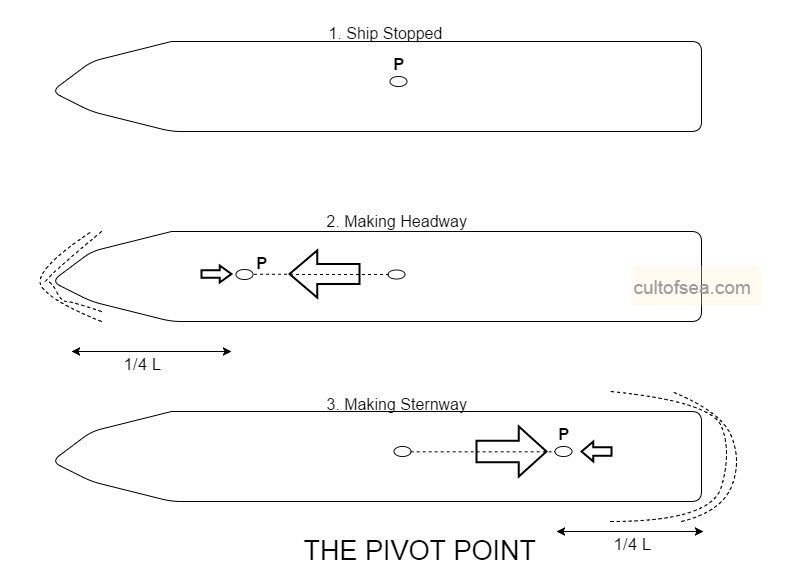
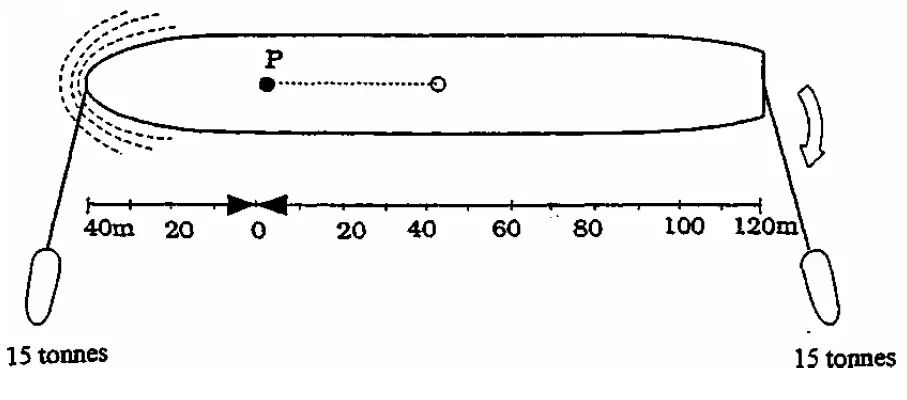
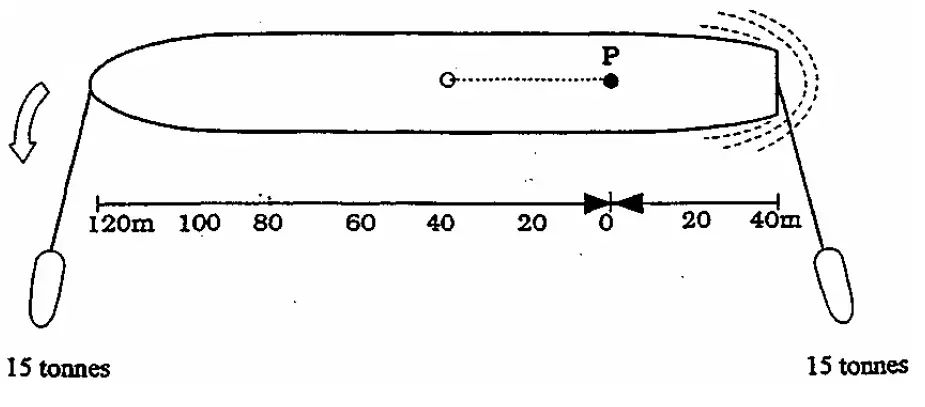
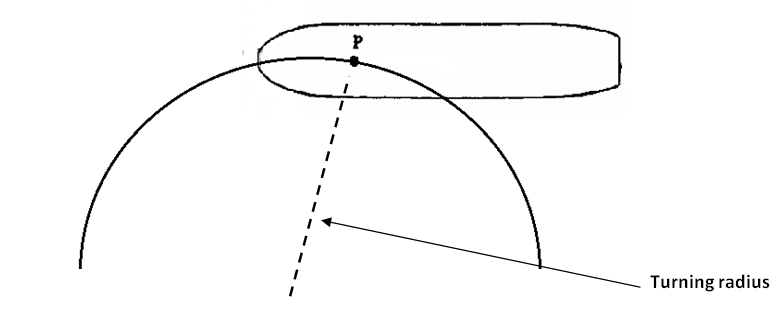
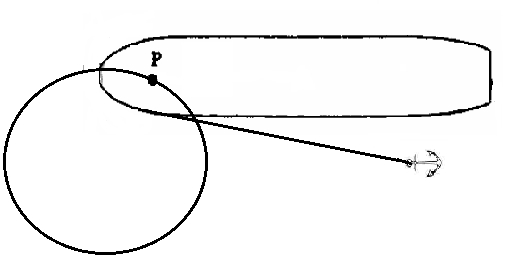
Leave a Reply